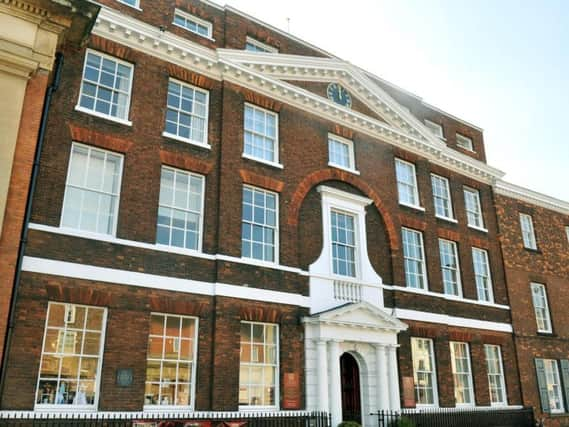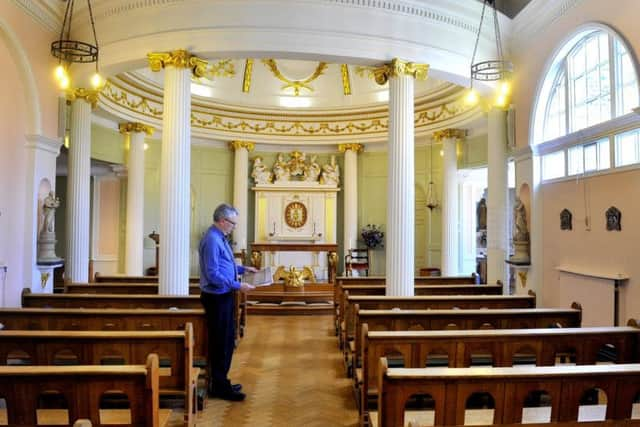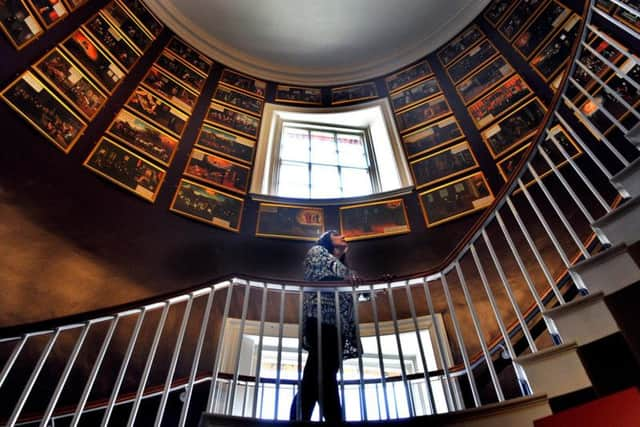The fascinating story of the York Bar Convent's secret chapel


Two hundred and fifty years ago, though, it faced a perilous future. England was still in the grip of religious persecution – a legacy of Henry VIII’s savage Reformation more than two centuries earlier – and against this backdrop of fear and uncertainty, the Sisters who ran the Bar Convent decided to build a secret chapel so they had a place of worship.
Persecution of Catholics
At the time, the convent was a secret. “It was a school, but it was a Catholic school and it was trying to hide this from the outside world,” says Jerry Ibbotson, the Bar Convent’s audience development manager.


Advertisement
Hide AdAdvertisement
Hide Ad“The Mother Superior at the time, a woman called Ann Aspinal, wanted a chapel but it was still illegal to be a Catholic so it had to be built and designed to be hidden away inside.”
Thomas Atkinson was the architect tasked with the job of designing the chapel. “He was also working at the same time for the Anglican Archbishop of York so he was running with the hare and the hounds,” says Ibbotson.
Hiding in plain sight
The building couldn’t look like a chapel. “There’s no stained glass, there’s just ordinary windows. It has this stunning, gold leaf decorated dome but that sits inside a false roof that’s tiled. So if you’re outside the building you just see the grey slate tiles.”


The chapel was paid for with help from local Catholic families, who risked being exposed. “They helped to fund it because there was still this secret network of Catholics and some were quite wealthy, and a lot of them lived around this part of York,” says Ibbotson.
Advertisement
Hide AdAdvertisement
Hide Ad“The labourers building it would have been told it was a school hall and it does look a bit like one. Then afterwards skilled craftsmen came in to fit it out and they would have been people they could trust.”
Secrets
A secret priest hole was built beneath the floorboards so he could hide in case of a raid. As it turned out the chapel evaded detection, but if it had been discovered it would have meant imprisonment for the Sisters and the priest.
“It’s unlikely at that point that the priest would have been executed, but a century or so earlier that would have been the case. There was a jail set aside for Catholics under Ouse Bridge, so they would have been in a prison cell below the waterline of the river.”
By the 1790s, the law was changed and the Catholic Relief Acts was passed which lifted, in stages, the ban on the Catholic faith. This meant the nuns were able to license the building as a place of worship. Today, the chapel, which is still used to hold Mass, is at the heart of the convent and open to the public.
A modern tourist attraction
Advertisement
Hide AdAdvertisement
Hide AdThe Bar Convent has reinvented itself in recent decades. When the school closed in 1985, the nuns, being a canny bunch, opened a B&B that continues to thrive, attracting visitors from all over the world. It also now includes a popular cafe and a museum space which later this month will host a pop-up exhibition, telling the chapel’s clandestine story to mark its 250th anniversary.
“We’ve been through the archives and discovered lots of documents that haven’t seen the light of day for a long time.”
These include a handwritten bill from Thomas Atkinson that lists all the work he did. There’s also a list of all the Catholic benefactors who helped raise funds to pay for the clandestine chapel.
Despite its grandeur this impressive four-storey Georgian house, which sits on the corner of Nunnery Lane and Blossom Street, was designed to hide in plain sight – something it’s still doing today. “We get people saying they walk past us every day on their way to work, so it’s still good at hiding itself,” says Ibbotson.
Advertisement
Hide AdAdvertisement
Hide Ad“Two hundred and fifty years ago it was a safe and welcoming place and it is still today. It’s open to everybody, you don’t have to be Catholic or religious in any way. The sign on the door as you come into our convent says it welcomes ‘those of all faiths and none’ and that’s very important.”
And Ibbotson believes the chapel’s history offers a fascinating insight into a torrid chapter of our past. “It was a time when it was believed you could either be English or you could be Catholic, you couldn’t be both. Yet just over a century after the convent came out of the shadows it was part of the establishment, with the Army asking the Sisters to help look after wounded Tommies,” he says.
“It’s part of British history that isn’t widely acknowledged or really known about, when part of the population had to hide its identity, and there are echoes of that around the world today.”
The chapel exhibition runs from April 18 for three months. A symposium on the history of the chapel is being held at the convent on April 26. For more information call 01904 643238.